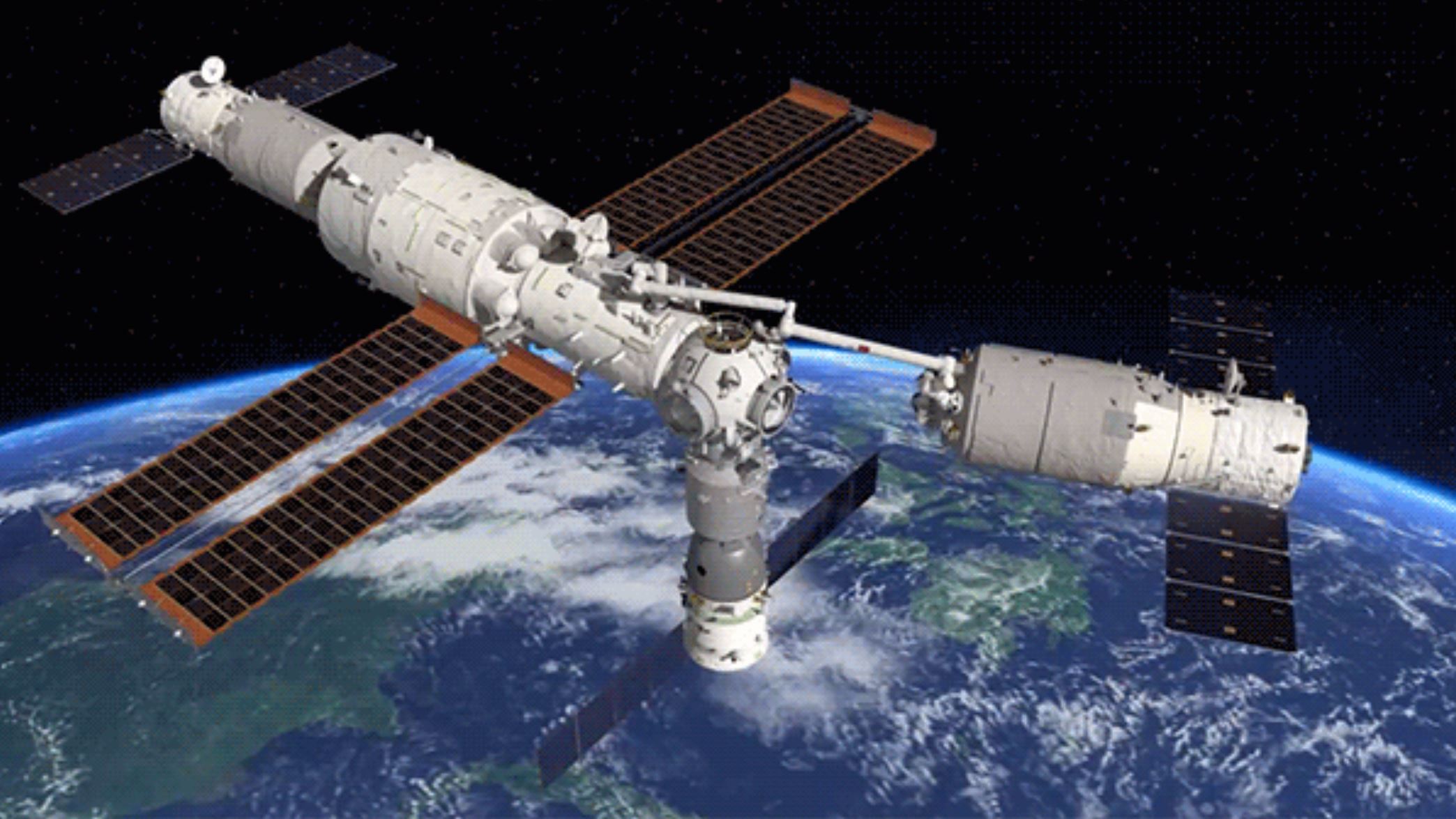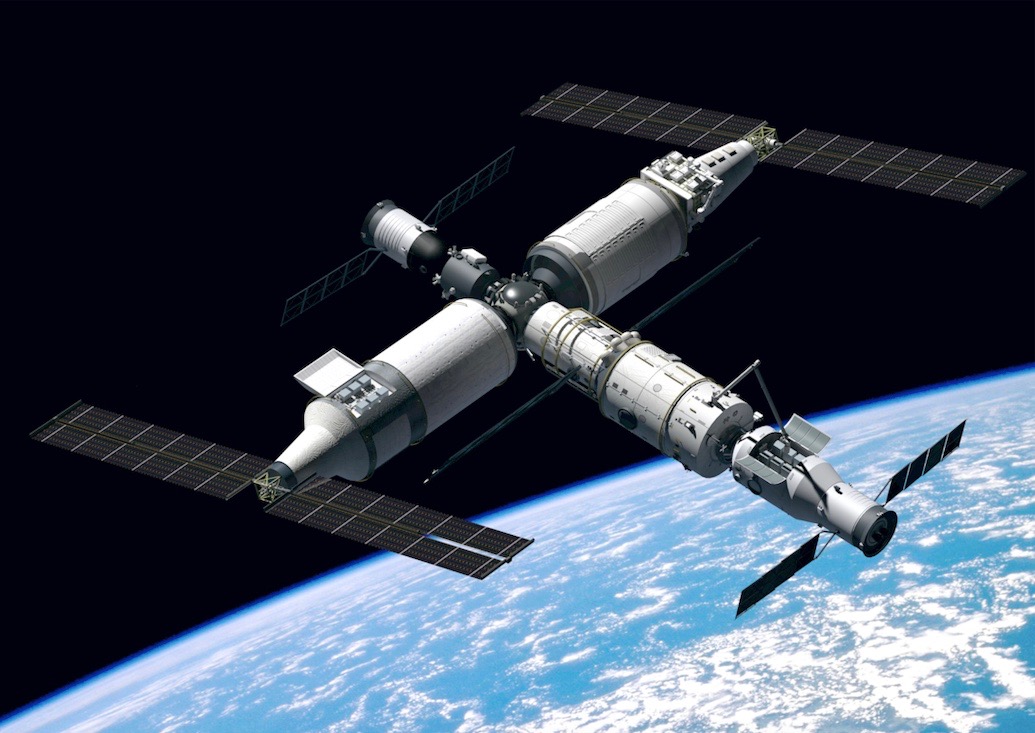On China's new space station, a robotic arm test paves way for future construction
The robotic arm moved the Tianzhou 2 cargo ship to practice for new modules.

A large robotic arm on China's space station has successfully grasped and maneuvered a cargo spacecraft in a crucial test ahead of upcoming module launches.
The 33-foot-long (10 meters) robotic arm on the Tianhe module of China's new Tiangong space station took hold of the Tianzhou 2 supply ship and moved it around 20 degrees, before returning it to the forward port on Tianhe's docking hub.
The 47-minute operation began at 5:12 p.m. EST on Wednesday, Jan. 5 (2212 UTC, 6:12 am Beijing time Jan. 6) to test the procedures and equipment needed for the addition and movement of larger space station modules. The successful trial was vital to the China National Space Administration's plan to complete construction of its space station later this year.
Related: China livestreams New Year's view from new space station
China's next space station modules, named Mengtian and Wentian, are scheduled to launch on separate Long March 5B rockets in the coming months and dock with the orbiting Tianhe. The robotic arm will then need to grasp the modules, each with a mass of more than 44,100 pounds (20,000 kilograms), and maneuver them from the forward port to radial ports.
"This is a technology in which we must achieve a breakthrough in the course of building the entire space station," Shi Jixin, deputy chief designer of the space station at the Fifth Academy under the China Academy of Space Technology (CAST), told CCTV.
Teams on the ground simulated the robotic arm test well in advance of the Wednesday operation. The robotic arm crawled to a berth port near the Tianhe docking hub two days prior to the test. From this position, it grabbed Tianzhou 2 by attaching to an adapter port on the cargo spacecraft.
Get the Space.com Newsletter
Breaking space news, the latest updates on rocket launches, skywatching events and more!

The robotic arm has played a part in spacewalks outside Tianhe, helping to move suited astronauts around to carry out their tasks. But this was the first time the arm has been used on a large spacecraft.
The addition of two new modules will complete China's T-shaped, three-module Tiangong space station. Mengtian and Wentian are dedicated to hosting a range of science experiments but also include an airlock for extravehicular activities, or spacewalks, and a smaller robotic arm.
Tianzhou 2 launched in May 2021 and was the first visitor to the newly-launched Tianhe module. It carried propellant for Tianhe and delivered supplies, equipment and experiments ahead of the Shenzhou 12 crewed mission, which ran from June to September 2021.
It has remained docked to Tianhe to be used in tests for moving future space station modules. The cargo spacecraft will be deorbited and burn up on reentry once after the tests are complete, carrying with it waste material from Tianhe.
Currently, Tianhe has three spacecraft docked at its ports. In addition to Tianzhou 2, the Shenzhou 13 crew capsule is docked at the nadir port, meaning it is pointing down towards Earth, while Tianzhou 3, which delivered supplies for the three Shenzhou 13 astronauts for their six-month-long mission, is docked at the rear port.
Shenzhou 13 is expected to run until March when astronauts Zhai Zhigang, Wang Yaping and Ye Guangfu will return to Earth.
Tianzhou 4 will then launch ahead of the Shenzhou 14 mission. That six-month-long crewed mission is expected to be aboard for the arrival of Mengtian and Wentian later in the year.
Follow us on Twitter @Spacedotcom and on Facebook.
Join our Space Forums to keep talking space on the latest missions, night sky and more! And if you have a news tip, correction or comment, let us know at: community@space.com.

Andrew is a freelance space journalist with a focus on reporting on China's rapidly growing space sector. He began writing for Space.com in 2019 and writes for SpaceNews, IEEE Spectrum, National Geographic, Sky & Telescope, New Scientist and others. Andrew first caught the space bug when, as a youngster, he saw Voyager images of other worlds in our solar system for the first time. Away from space, Andrew enjoys trail running in the forests of Finland. You can follow him on Twitter @AJ_FI.









